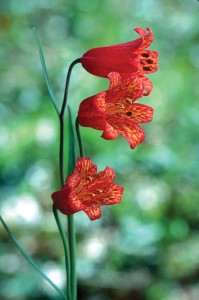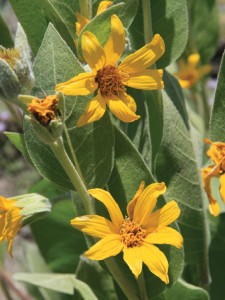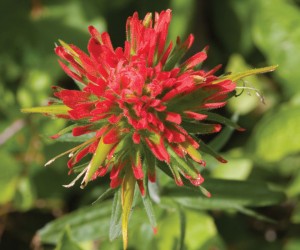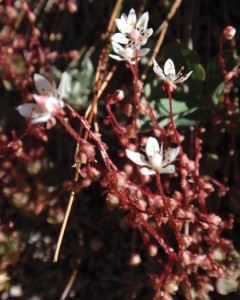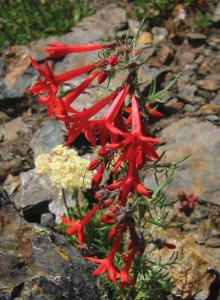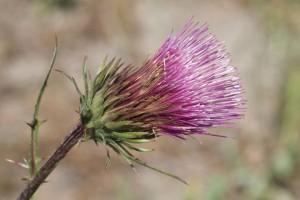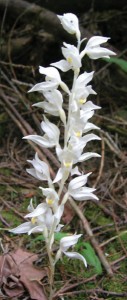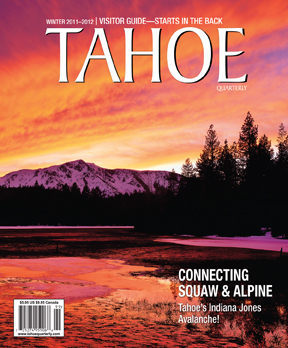Born to be Wild: Tahoe’s wildflowers
A primer to some of Tahoe’s wildflower wonders
Written by Allison Bender
Summer in Tahoe means a spectacular display of colorful blooms: fields of yellow mule ears gazing at the sun, seas of blue lupine and orange poppies nodding in the wind.
More than 700 kinds of wildflowers grow in the region, according to Zephyr Cove resident Roger Rosenberger, wildflower expert and founder of www.wildflowerhikes.com. “It’s an endless palette, which, of course, makes it so interesting.”
Wildflower season typically begins in June and peaks in July and August; the season progresses uphill, so the best spots for end-of-season blooms are high, north-facing slopes.
Most Tahoe trails, whether up peaks, through meadows or beside riverbanks, boast an array of colorful wildflowers. Rosenberger’s favorite trails for viewing area blooms include Barker Pass Trail (go four miles south of Tahoe City, turn at the sign to Blackwood Canyon, then drive seven miles to access the trailhead) and the trail to Round Top Lake, just past Kirkwood off Highway 88. Other classic wildflower hikes include Truckee’s Sagehen Meadows, Squaw Valley USA’s Shirley Canyon, South Lake’s Mt. Tallac and Incline Village’s Mt. Rose.
Take a guide (such as Wildflowers of the Tahoe Sierra by Reno resident Laird Blackwell), a magnifying glass and camera, and remember not to pick wildflowers—a crime in California, as it disturbs the ecosystem. With that in mind, here are a few common, not-so-common and downright rare flowers to watch for on your next wildflower walk:
Scarlet Fritillary (Fritillaria recurva):
Rosenberger’s personal favorite, the scarlet fritillary is “one of the most beautiful, which shows up very early in the season.” A member of the lily family, this red bell-shaped flower is splashed with yellow and occasionally greens or brownish-purples. Rosenberger adds, “It’s a fairly rare flower, orange color, and it shows up just after the snows melt.” He finds it on Lake Tahoe’s West Shore, on the road leading to Barker Pass.
Crimson
Columbine (Aquilegia Formosa):
The red and yellow coloring and the many yellow stamens protruding beyond the petals characterize this graceful flower. This member of the buttercup family attracts hummingbirds, though the plant itself—particularly the root and seeds—contains potent toxins. For this reason, Native Americans ground the seeds into a paste to cure head lice.
Explorer’s Gentian (Gentiana calycosa):
A delicate, five-petaled deep blue flower, the gentian takes its name from Gentius, the ancient Illyrian king who first discovered the flower’s medicinal qualities. They range from anti-inflammatory purposes to diet control to combating hair loss. The gentian blooms late, often remaining unseen until late August or September. It was also a favorite flower of Flora Hewlett and today is used as the logo for her eponymous foundation, which provides grants to a multitude of arts and environmental endeavors. The Alpine Gentian, another variety present in the Tahoe area, boasts a flared white lobe with green spots and is tinged with purple.
Wooly Mule Ears (Wyethia mollis):
These bright yellow flowers are some of the Lake Tahoe region’s most ubiquitous. Their roots, which can reach more than 30 feet deep, allow them to thrive in the region’s poor volcanic soils, where moisture seeps down to the bedrock. The flower is named for its leaves’ broad, hairy appearance.
Applegate’s Paintbrush (Castilleja applegatei):
You might know these striking red flowers, a member of the snapdragon family, as Indian’s Paintbrush thanks to a Native American tale. After a crippling accident, a young brave prayed to the Great Spirit for guidance. The dramatic red flower answered his prayers by inspiring him to become a great craftsman. These flowers boast sticky, wavy-edged leaves that help identify it from other regional paintbrushes, which also include the desert, long-leaf, alpine and great red varieties.
Bud Saxifrage (Saxifraga bryophora):
Bring a magnifying glass to study these little beauties, which Rosenberger calls “belly flowers,” because “you need to get close to the ground to see them.” Only about one-eighth of an inch across, red and white detailing speckles the flower’s five white petals. Other saxifrage blooms in the area include brook and bog.
Scarlet Gilia (Pomopsis aggregate):
Several types of gilias, a member of the phlox family, grow in the Tahoe Region, but look for showy, star-shaped red trumpets blossoming off a single stem for the scarlet gilia. Crush its leaves to discover how it earned its nickname, “skunk flower.”
Anderson’s Thistle (Cirsium andersonii):
This purple, spiky flower, a curious combination of spiny and delicate, grows in dryer areas throughout the Sierra. It looks similar to the bull thistle—a noxious, invasive weed in the Tahoe region endangering native ecology—but a close look reveals obvious differences: The bull thistle has thorns on its stem and hourglass-shaped flowers; Anderson’s Thistle has a smooth stem and straight flowers.
Phantom Orchid (Cephalanthera austiniae):
Wildflower aficionados love to find this rare, exotic plant. As a non-photosynthetic plant, it doesn’t get nutrients from the sun; instead, it steals nutrients from other plants by using fungi as a go-between. It takes its name from the whiteness of its stem and cone of blooms, an effect of no chlorophyll. It appears only in the moist, shady habitats of Lake Tahoe’s West Shore; Rosenberger has found it near Vikingsholm.
Western Larkspur (Delphinium occidentale):
“Larkspurs are fascinating,” Rosenberger says. The non-native version sold in nurseries, delphinium, derives its name from the Greek word for dolphin. Larkspur can exceed three feet in height, with dozens of blue-purple buds in a cylindrical shape. These members of the buttercup family grow in moist areas, near streams or meadows.
To learn more about area wildflowers, join Rosenberger on one of his five wildflower walks scheduled in coordination with Tahoe Rim Trail Association for the month of July.
For more information about where to find area wildflowers, visit Rosenberger’s website, www.wildflowerhikes.com.
Reno resident Alison Bender loves to frolic through Mt. Rose Meadows during wildflower season, www.alisonobender.com.
Category: Home & Garden, Mountain Garden, Natural World, Outdoors, Summer
